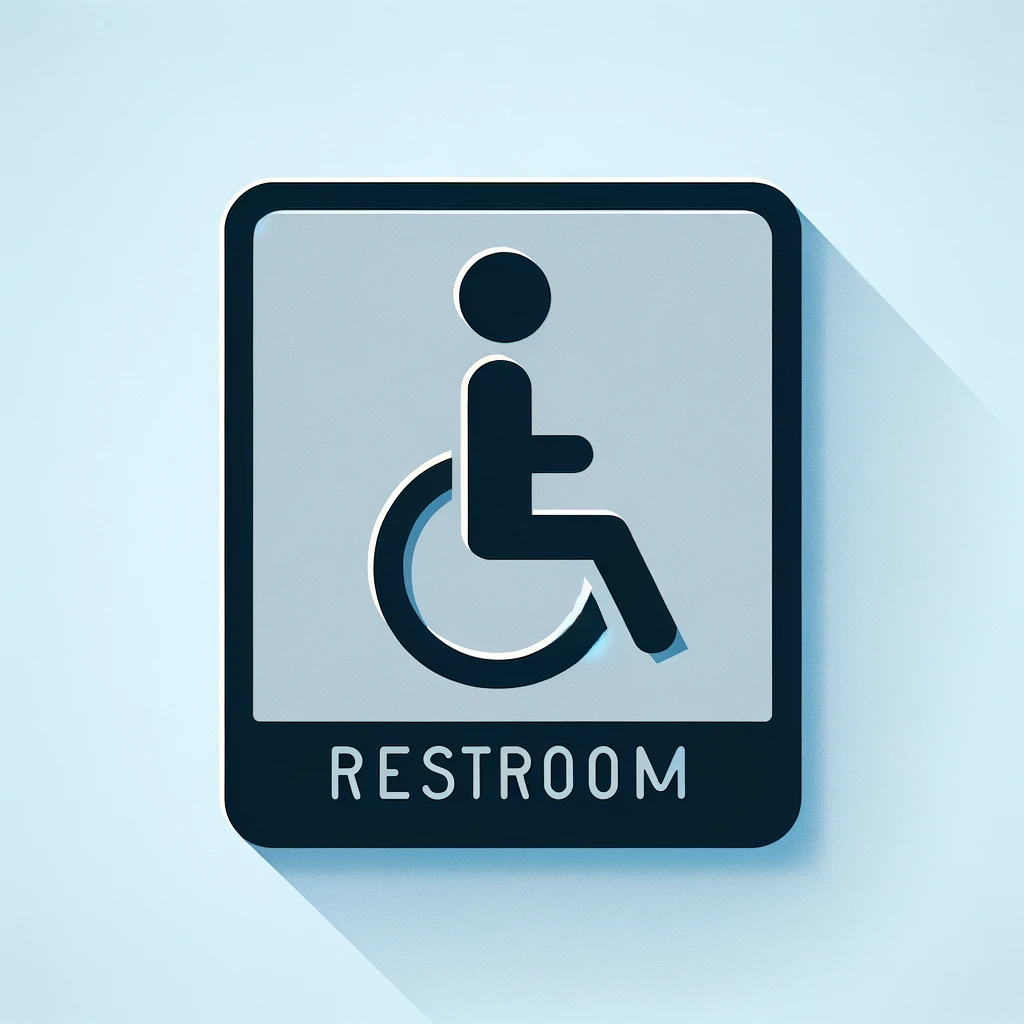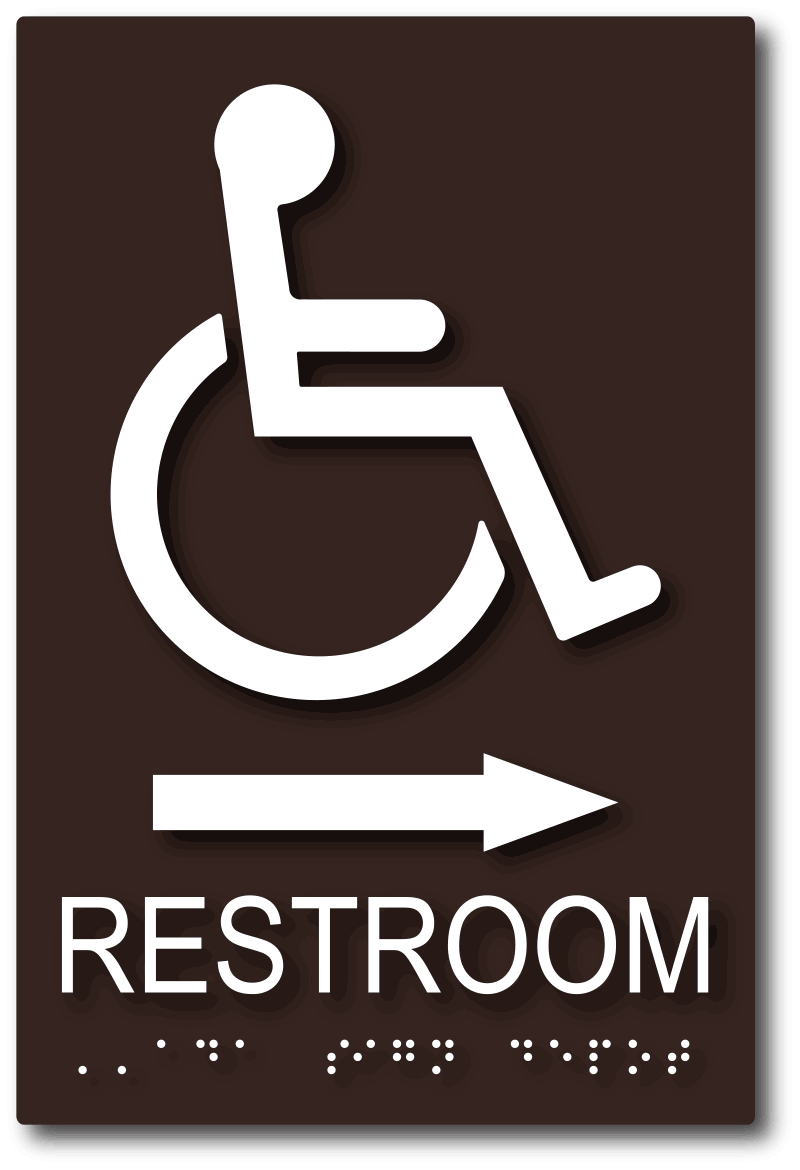Checking Out the Secret Functions of ADA Indications for Enhanced Access
In the world of ease of access, ADA indicators serve as silent yet powerful allies, ensuring that spaces are comprehensive and navigable for individuals with disabilities. By incorporating Braille and responsive aspects, these indications damage barriers for the aesthetically damaged, while high-contrast color design and legible fonts provide to varied visual demands. In addition, their critical positioning is not arbitrary yet instead a calculated initiative to promote seamless navigating. Beyond these functions lies a much deeper narrative regarding the evolution of inclusivity and the recurring commitment to developing equitable rooms. What much more could these indicators represent in our search of universal access?
Importance of ADA Conformity
Making certain compliance with the Americans with Disabilities Act (ADA) is critical for promoting inclusivity and equivalent accessibility in public spaces and work environments. The ADA, established in 1990, mandates that all public centers, employers, and transportation solutions suit individuals with impairments, guaranteeing they appreciate the same rights and chances as others. Conformity with ADA criteria not just fulfills legal commitments but also enhances an organization's track record by showing its dedication to variety and inclusivity.
One of the crucial elements of ADA compliance is the implementation of available signage. ADA indicators are made to make sure that individuals with disabilities can easily browse with buildings and rooms.
Moreover, sticking to ADA laws can reduce the risk of lawful consequences and potential penalties. Organizations that fall short to comply with ADA standards may deal with lawsuits or fines, which can be both harmful and monetarily difficult to their public image. Therefore, ADA compliance is indispensable to promoting a fair atmosphere for every person.
Braille and Tactile Aspects
The unification of Braille and tactile components into ADA signs embodies the concepts of access and inclusivity. These functions are crucial for people that are visually impaired or blind, allowing them to navigate public rooms with higher independence and confidence. Braille, a tactile writing system, is necessary in offering composed info in a format that can be quickly viewed with touch. It is normally put under the equivalent text on signs to guarantee that people can access the information without visual help.
Responsive components expand past Braille and consist of increased symbols and characters. These components are designed to be noticeable by touch, permitting people to determine room numbers, washrooms, exits, and other critical locations. The ADA establishes certain guidelines concerning the size, spacing, and positioning of these responsive elements to optimize readability and make certain uniformity across various settings.

High-Contrast Color Design
High-contrast color design play a pivotal duty in improving the visibility and readability of ADA signage for people with visual problems. These plans are vital as they optimize the difference in light reflectance in between text and history, guaranteeing that indicators are quickly discernible, even from a range. The Americans with Disabilities Act (ADA) mandates making use of details color contrasts to suit those with limited vision, making it a crucial element of compliance.
The effectiveness of high-contrast shades hinges on their capacity to stand apart in numerous illumination conditions, including poorly lit environments and locations with glow. Normally, dark message on a light background or light message on a dark history is employed to accomplish optimum contrast. Black message on a white our website or yellow history gives a stark visual distinction that helps in fast recognition and understanding.

Legible Fonts and Text Dimension
When thinking about the layout of ADA signs, the choice of clear typefaces and proper message dimension can not be overemphasized. These elements are important for making certain that indications come to people with aesthetic problems. The Americans with Disabilities Act (ADA) mandates that typefaces must be not italic and sans-serif, oblique, manuscript, very attractive, or of uncommon kind. These needs help guarantee that the text is easily readable from a distance which the characters are distinguishable to diverse audiences.
The size of the text also plays a crucial role in ease of access. According to ADA guidelines, the minimal message elevation must be 5/8 inch, and it ought to enhance proportionally with viewing range. This is particularly essential in public spaces where signage needs to be read quickly and properly. Consistency in text size contributes to a cohesive aesthetic experience, helping individuals in browsing atmospheres effectively.
Moreover, spacing between letters and lines go to this site is important to clarity. Appropriate spacing avoids personalities from appearing crowded, boosting readability. By sticking to these standards, developers can substantially boost availability, ensuring that signs offers its intended function for all people, despite their aesthetic capabilities.
Efficient Positioning Strategies
Strategic positioning of ADA signs is vital for taking full advantage of accessibility and making sure conformity with legal requirements. Effectively positioned indicators direct people with disabilities successfully, promoting navigation in public spaces. Key considerations consist of closeness, exposure, and height. ADA standards specify that signs should be mounted at a height between 48 to 60 inches from the ground to ensure they are within the line of sight for both standing and seated individuals. This conventional height range is vital for inclusivity, making you could try this out it possible for mobility device customers and people of differing heights to gain access to info effortlessly.
Additionally, indicators should be placed nearby to the lock side of doors to enable very easy recognition before entrance. Consistency in indicator placement throughout a center enhances predictability, lowering confusion and boosting overall customer experience.

Verdict
ADA signs play an essential role in promoting accessibility by integrating attributes that deal with the demands of people with disabilities. Including Braille and tactile components makes certain important information is accessible to the aesthetically damaged, while high-contrast color design and readable sans-serif fonts improve presence across numerous lighting conditions. Efficient positioning strategies, such as suitable installing heights and critical areas, further help with navigation. These aspects collectively promote a comprehensive setting, emphasizing the relevance of ADA conformity in making certain equivalent accessibility for all.
In the realm of ease of access, ADA signs serve as quiet yet effective allies, making sure that spaces are comprehensive and accessible for individuals with impairments. The ADA, enacted in 1990, mandates that all public centers, companies, and transportation services suit individuals with impairments, guaranteeing they appreciate the exact same legal rights and opportunities as others. ADA Signs. ADA indicators are created to guarantee that individuals with handicaps can quickly navigate via rooms and buildings. ADA standards specify that indications should be placed at a height in between 48 to 60 inches from the ground to ensure they are within the line of view for both standing and seated people.ADA signs play a vital role in promoting ease of access by integrating features that address the demands of people with disabilities